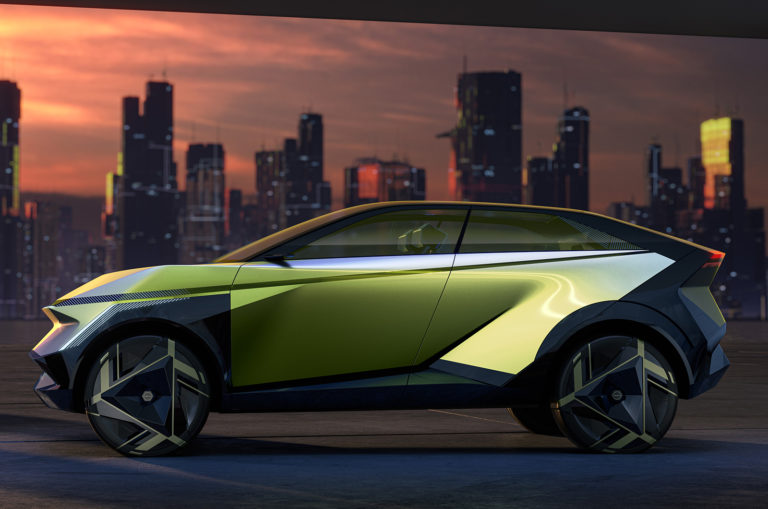The Hyper Urban, described by Nissan as having a “sleek and modern aesthetic”, serves as a preview of the next Qashqai. The two concepts show that Nissan will build on the edgy styling of both the current Juke and Qashqai.
As previously revealed, the Leaf successor will be based on the 2021 Chill-Out Concept, and will represent a major shift from its popular predecessor, taking the form of a sleek crossover.
Nissan has previously revealed that the Leaf successor is due to go into production in 2026.
The Leaf replacement has previously been confirmed to arrive in 2026 and Nissan has committed to stop selling ICE cars in Europe by 2030 – five years ahead of the current date required to do so by both the UK and the EU.
No technical details have been released yet, but both will use Renault-Nissan-Mitsubishi Alliance EV platforms.
The Juke and Qashqai will sit on the CMF-EV platform, used by the larger Nissan Ariya and the Renault Mégane E-Tech Electric.
The Sunderland plant will focus on the CMF-EV platform, with production of the new Nissan Micra EV – which will use the smaller CMF-BEV arhitecture – set to take place alongside the new Renault 4 and Renault 5 at a Renault plant in France.
The current Qashqai was launched in 2021 and was Britain’s best-selling car last year. It has accounted for around a fifth of all cars manufactured in the UK since 2007, and is widely credited with sparking the craze for SUVs. Meanwhile, the popular Juke has been on sale since 2019.
Nissan’s Sunderland plant currently has two production lines: one for the Juke and Qashqai and one for the Qashqai and Leaf.
Nissan expands Sunderland investment
The original EV36Zero plan that launched in 2021 featured funding from Nissan, battery production partner Envision AESC and Sunderland City Council.
As well as the upgrades to the Nissan plant, the deal included a new Envision AESC battery gigafactory that will open with a capacity of 11GWh but could grow to an eventual annual capacity of 30GWh – enough to power around 100,000 EVs each year.


